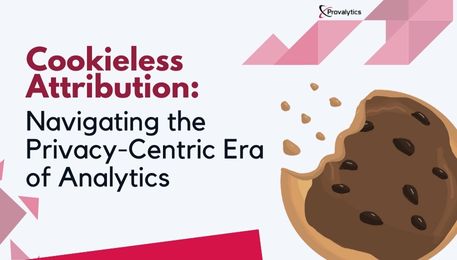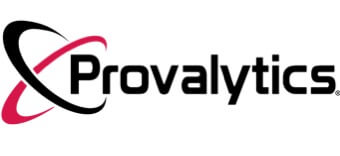Cookieless Attribution: Navigating the Privacy-Centric Era of Analytics
The concept of cookieless analytics has received a lot of attention in the ever-changing landscape of digital marketing. While it is not currently possible to go fully cookie-free, there are strategies to reduce your dependency on cookies for analytics tracking. Transitioning to Google Analytics 4 (GA4), which provides a privacy-centric architecture designed to adapt to a cookie-less environment, is one such approach.
The Rise of GA4: Privacy-Centric Analytics
GA4, Google’s latest analytics tool, introduces various modifications that may appear daunting at first. One of its distinguishing qualities, though, is its ability to work with or without cookies. GA4 can fill in data gaps by employing machine learning and statistical modeling, avoiding the requirement for substantial cookie usage. This shift is consistent with the global trend of less reliance on cookies for user tracking.
🚀 Yes, I Want The 2024 Playbook!

Understanding Cookies and GA4’s Approach
Let’s start with the basics to grasp the relevance of cookieless monitoring. Cookies are files that retain small amounts of user data, allowing for more tailored online experiences. Third-party cookies, which follow users across numerous domains, have created privacy and abuse issues. As the world has become more concerned about privacy, policies such as the General Data Protection Regulation (GDPR) and the California Consumer Privacy Act (CCPA) have attempted to address these concerns.
GA4 alleviates privacy concerns by relying exclusively on first-party cookies, which are compliant with privacy standards. This technique ensures that user data is acquired in a responsible and transparent manner. Furthermore, utilizing a technique known as blended data, GA4 uses machine learning and other protocols to fill in data gaps left by cookies. According to Google’s official blog, GA4’s flexible measuring method includes modeling to compensate for insufficient data, ensuring accurate marketing outcomes, and addressing customer expectations.
Although GA4 is a potential option, it is crucial to highlight that achieving a cookie-free environment is now impossible. Google initially offered a solution called FLoC (Federated Learning of Cohorts) in reaction to the probable loss of third-party cookies, which was met with skepticism from privacy groups. As a result, Google released the Privacy Sandbox and the Topics API, an alternative approach to ad targeting that respects user privacy. The Topics API enables browsers to determine users’ topics of interest based on their browsing history, without the need of intrusive tracking techniques such as third-party cookies or browser fingerprinting.
GA4 functions in a cookie-less environment by assigning randomly generated user IDs rather than depending primarily on cookies. User anonymity can be achieved by using Google Tag Manager to generate unique client IDs for each page visit. This method allows for the tracking of user behavior across websites while maintaining privacy and user control.
Marketers must adapt to change as digital marketing enters a new era marked by cookieless analytics, restrictions, and increased privacy concerns. Adopting GA4 and its privacy-focused features allows you to protect user privacy while still receiving important insights from analytics data. Going cookieless with GA4 can be a step toward more responsible and effective marketing methods.
Cookieless attribution is becoming more popular as the globe moves toward a more privacy-focused digital landscape. While attaining a completely cookie-free environment is not currently feasible, moving to GA4 provides a workable approach. GA4 decreases dependency on cookies for analytics monitoring by employing machine learning and modeling approaches, harmonizing with growing privacy standards. Accepting this change allows marketers to manage the changing digital marketing landscape while preserving effective measurement and user privacy.
Is it possible to go completely cookieless with analytics tracking?
No, achieving a fully cookieless environment is not currently feasible. However, transitioning to Google Analytics 4 (GA4) allows for reduced reliance on cookies and the implementation of privacy-centric strategies.
How does GA4 handle user tracking without cookies?
GA4 primarily relies on first-party cookies, which comply with privacy regulations such as GDPR and CCPA. Additionally, GA4 leverages machine learning and statistical modeling to fill in data gaps left by cookies, ensuring accurate measurement and customer-centric insights.
What are the alternatives to third-party cookies proposed by Google?
Google initially proposed FLoC (Federated Learning of Cohorts) as an alternative to third-party cookies. However, due to privacy concerns, Google introduced the Privacy Sandbox and the Topics API. The Topics API allows browsers to determine users’ topics of interest based on their browsing history, without invasive tracking techniques.
How does GA4 ensure user privacy while collecting data?
GA4 respects user privacy by primarily relying on first-party cookies, which comply with privacy regulations. Furthermore, user anonymity can be achieved by generating unique client IDs for each page visit using Google Tag Manager.
What are the benefits of transitioning to GA4 in a cookieless world?
Transitioning to GA4 provides marketers with a privacy-centric analytics tool that adapts to evolving privacy regulations and user preferences. By embracing GA4, marketers can strike a balance between respecting user privacy and gaining valuable insights from analytics data.

